Introduction:
This includes NXP’s i.MX series; TI’s Jacinto series; Qualcomm’s 820A series; and Nvidia’s Drive PX 2 onboard computer.


Editor’s Note:The rise of internet car manufacturing and the acceleration of automotive intelligence have brought varying degrees of impact on traditional automakers. People in different positions within the industry have differing opinions. The author of this article is an automotive chassis engineer. He has written down his views, and everyone is welcome to discuss together. This issue’s theme is Automobile Brain (AB).
In the previous chapter, the author talked about integrated sensor systems, radar systems, and high-resolution camera systems, which provide the most basic hardware support for autonomous driving. Of course, in addition to these, there are also high-precision maps and high-speed communication modules connected to the cloud mentioned in the first chapter of this series, as well as future new technologies.
As mentioned in the previous chapter, the three major systems will provide signals, images, and even videos to the vehicle for autonomous driving. Therefore, this information requires data fusion technology, which then analyzes driving commands and sends them to different ECU units of the vehicle.
High-precision map accuracy needs to reach centimeter-level, helping the car to pre-perceive complex road information such as slope, curvature, and heading, combined with intelligent path planning, allowing the autonomous vehicle to make correct decisions in a timely manner.
The high-speed communication module needs to provide download and upload data between the vehicle and the cloud server. As mentioned in the article “Intel: Autonomous Vehicles Generate About 4000GB of Traffic Daily”, autonomous vehicles will generate 0.75GB of data traffic per second.
In summary, whether it is data fusion technology, high-precision maps, or big data communication, all require a powerful processor to control, which is what this chapter will discuss about the Automobile Brain (AB). It is not recommended to use AC (Automobile Core) because this processor needs to manage the entire lifecycle of the vehicle’s driving career, just like the human brain.
If it becomes AB, it needs to meet the following conditions:
1. Strong computing power
2. Strong video image processing capability
3. Strong DSP processing capability
4. Strong data communication capability
5. Integrated next-generation in-vehicle standard interfaces
6. On-chip intelligent power management system
7. Rich peripheral interfaces
8. Automotive-grade standards (especially temperature)
Now, let the author lead everyone to explore the current status of application processors that may become AB.

NXP’s i.MX Series
Whenever talking about in-vehicle application processors, one cannot fail to mention NXP’s i.MX series (Freescale and NXP merged in 2015). Currently, the most widely used in-vehicle application is the i.MX6 series products, here the author will introduce two higher-end series.
i.MX 6 Quad-Core Series:
The i.MX 6 Quad-Core series provides a running speed of up to 1.2GHz, with four ARM Cortex-A9 cores and 1MB L2 cache, combined with integrated 4 Shaders 3D graphics units and 1080p encoding/decoding video engines, supporting HD video output (with HD ports, LCD, LVDS, VGA, HDMI) and Camera Parallel and MIPI video inputs. The 360-degree panoramic parking system can support four nearly 180-degree fisheye cameras; it also provides power management functions to support 350mW of 1080p video playback, solving the processing problems of in-car data images and videos. It supports a large number of peripherals, such as CAN, Ethernet AVB, PCI Express, and external storage interfaces (SATA-II), etc. This platform can provide a higher level of multimedia performance for vehicle manufacturers, and the quad-core can quickly process data in parallel, making it the most powerful chip in the i.MX6 series, laying a solid foundation for NXP to become the leader in AB in the future.
i.MX 6 Dual-Core Series:
The i.MX 6 Dual-Core series has two ARM Cortex-A9 cores running at speeds of up to 1.2GHz, making it an ideal platform for automotive entertainment systems. With support for up to four screens simultaneously and integrated MIPI display ports, HDMI v1.4, and LVDS, the i.MX 6 Dual-Core series quickly dominated the market for in-vehicle entertainment systems and instrument systems due to its cost-effectiveness, becoming the biggest winner. (All images in this article are from the internet)
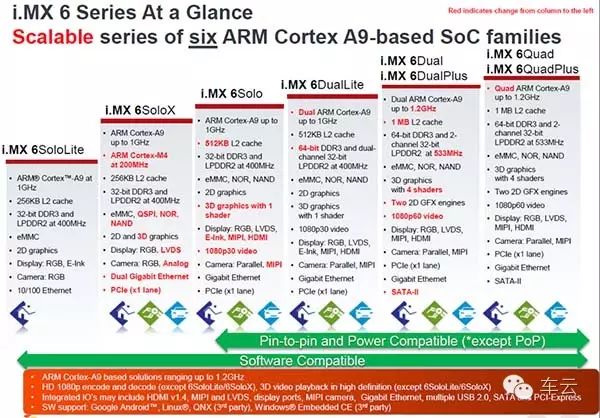
However, this is still not enough to support it becoming the mainstream AB, so NXP is working hard to develop its next-generation i.MX8 series processors, so stay tuned.

Texas Instruments (TI) Jacinto Series
When it comes to TI, it can be said that everyone knows it. TI is a global leader in analog technology, digital signal processing (DSP), and microcontroller (MCU) semiconductor suppliers. In recent years, TI has also begun to make strides in the automotive industry, and it has made remarkable achievements.
Currently, TI is mass-producing the multi-core heterogeneous processor Jacinto6 (J6), which contains two ARM Cortex-A15 cores, two ARM M4 cores, two C66x floating-point DSPs capable of software-defined radio and advanced audio processing functions, two EVE accelerators, multiple POWERVR SGX544-MPx graphics cores from Imagination, and a large number of peripherals such as CAN, MOST media local bus (MLB), Ethernet AVB, PCI Express, and dual external memory interfaces.
The EVE core of J6 is very suitable for a large number of matrix calculations. Through matrix algorithms, it can calculate moving objects, extract contour edges, and vectorize spatial data. “To some extent, EVE can be seen as a very unique DSP.” In addition, in machine vision, EVE needs to be equipped with templates to judge objects through feature matching.
The J6 SoC integrates many functional features such as central protocol stack electronic systems, graphical HMI, multi-display support, in-vehicle networks, media decoding, and radio broadcasting reception, supporting multiple technologies with just one chip, effectively reducing development costs. The 360-degree panoramic parking system can support six nearly 180-degree fisheye cameras. J6 can ensure real-time performance, making what the human eye sees consistent with reality to ensure safety; secondly, it can ensure linearity, flattening the distorted space of images through DSP software algorithms, stitching them together, and presenting them linearly on the display, making what is seen on the screen real. (Images from TI)
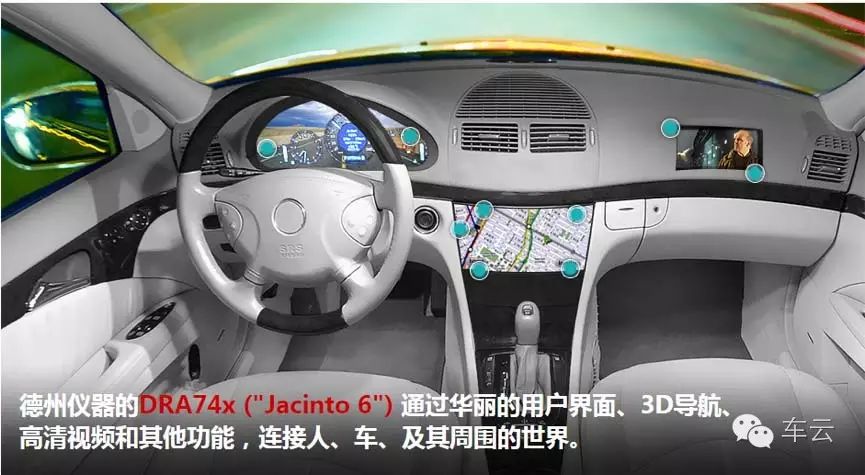
Compared to NXP’s i.MX6 series, the Jacinto J6 series has powerful performance, seemingly born for AB, and has already been applied by vehicle manufacturers. So, is there a more powerful processor?

Qualcomm’s 820A Series
If TI is the ancestor of semiconductors, then Qualcomm is definitely the leader in wireless technology. Faced with the continuously saturated market of mobile communication devices, Qualcomm naturally turned its attention to the automotive industry, and its approach is absolutely astonishing.
Qualcomm announced the Snapdragon 602A chip as early as 2014, but its functionality was not very powerful, so it quickly launched the powerful Snapdragon 820A chip in early 2016. The Snapdragon 820A possesses all the advantages of the high-end Snapdragon 820 chip, with a new 64-bit 1.5Hz~2.0Hz Kryo CPU and Adreno 530 GPU. Automakers can also utilize the Snapdragon 820’s Zeroth machine intelligence capabilities to develop navigation and in-vehicle infotainment products that learn over time.
Qualcomm has another inherent advantage, which is the integration of CAT9/10/12/13 LTE-A, supporting download speeds of up to 600Mbps and upload speeds of 150Mbps; it also supports 802.11ac2x2MIMO Wi-Fi hotspots, connecting multiple mobile terminals inside the vehicle, and 802.11p dedicated short-range communication (DSRC) for V2X (vehicle-to-vehicle/infrastructure/pedestrian) communication. Through local connections supported by Bluetooth in the vehicle, content analysis between in-vehicle mobile terminals and the vehicle’s infotainment system can be achieved. Qualcomm leads the 3GPP in developing automotive V2X specifications for LTEV2X and 5G standards. Just take a look at the functions of the 820 to understand the power of the 820A.
Among the suppliers mentioned above, they basically start with in-vehicle entertainment systems or advanced driver-assistance systems (ADAS), and then their functions become increasingly powerful and their performance higher. Nvidia, on the other hand, has directly embarked on the path of AB.

Nvidia’s Drive PX 2 Onboard Computer
Nvidia is a global leader in graphics technology and digital media processors, especially its graphics card products, which are well-known among gamers.
Nvidia launched a new graphics processor, Tegra K1 VCM, applicable to the automotive field in 2014, which can achieve functions including pedestrian detection, traffic sign recognition, and lane recognition in advanced driver-assistance systems (ADAS) based on radar camera sensor systems, applied in collision prevention (PCS), lane departure warning (LDW), and adaptive cruise control (ACC) systems.
In 2016, it launched the Drive PX 2 onboard computer, which adopts a 12-core CPU, includes two next-generation NVIDIA Tegra processors (with a total of 8 A57 cores and 4 Denver cores) and two next-generation GPUs based on NVIDIA Pascal architecture, using 16nm FinFET technology. The single-precision computing power reaches 8TFlops, surpassing the TITAN X, while the deep learning computing power far exceeds the latter. Nvidia believes that a correctly designed autonomous vehicle requires powerful processing capabilities to manage sensors, controllers, and to learn to achieve full autonomy. The Drive PX2 computer can handle 12 video cameras, optical remote sensing technologies, radar detectors, and ultrasonic sensors. Drive PX 2 also has deep learning capabilities, meaning that the more it drives on the road, the smarter it becomes and can handle more road conditions.
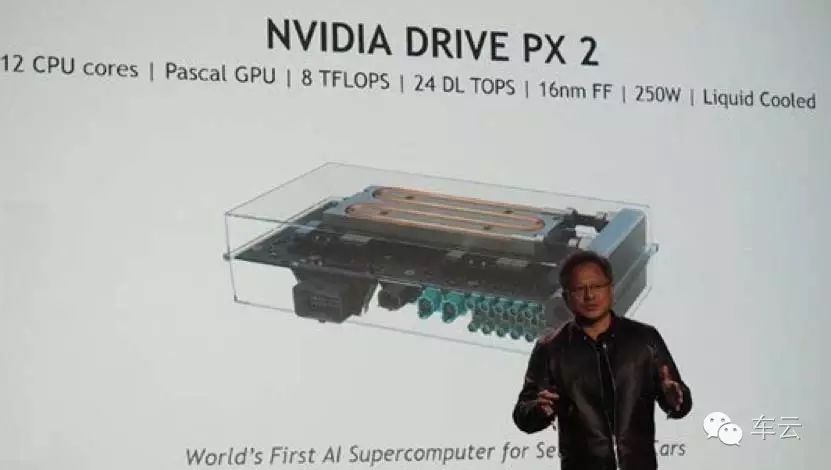
NXP, TI, and Qualcomm have mature in-vehicle products and rich experience in vehicle development. They currently basically break through through in-vehicle entertainment systems or ADAS systems, gradually developing into AB suppliers. Similar companies include ST, RENESAS, MTK, Huawei, etc.; while companies like Nvidia, based on mature experience in the PC market, directly design and develop chips for AB, occupying the market from high to low, which is also highly likely. Similar companies include Intel, AMD, etc. These are all strong competitors for future AB suppliers, laying the foundation for the development of autonomous driving.
With the automobile brain, there must be an OS, so the next chapter will discuss in-vehicle OS systems.
Click below [Read the original text] to view the series review of “How Traditional Automakers Can Avoid Being Outdated”

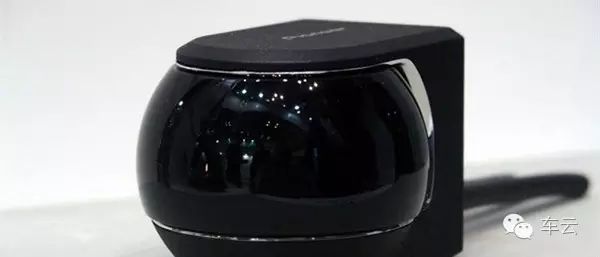
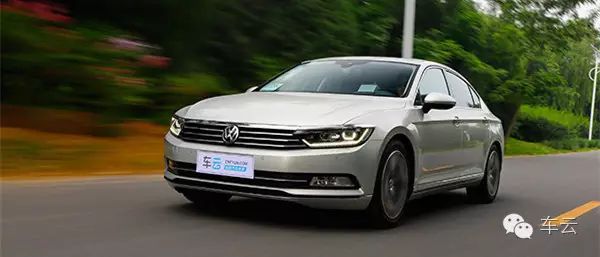
Hey! You haven’t added Cheyun as a friend ↓↓↓
